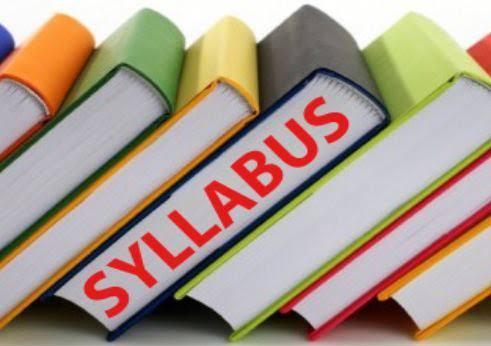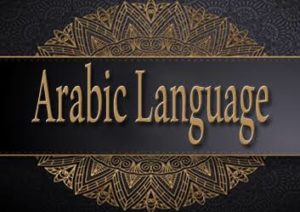Latest Update On Arabic jamb syllabus: This page will discuss about the Jamb syllabus and recommended textbooks for Arabic for the preparation of forthcoming exams joint admissions and Matriculation Board popularly known as (JAMB)
Jamb syllabus for Arabic – We have uploaded the Joint Admissions and Matriculation Board (JAMB) syllabus in Arabic for Unified Tertiary Matriculation Examination (UTME) candidates to prepare well for their forthcoming exams.
GENERAL OBJECTIVES
The aim of the Unified Tertiary Matriculation Examination (UTME) syllabus in Arabic is to prepare candidates for admission into tertiary institutions through the Board’s examination. It is designed to test their achievement of the course objectives, which are to:
1. answer comprehension questions correctly in standard Arabic;
2. translate simple texts from English to Arabic and vice versa;
3. apply the rules of Arabic grammar functionally;
4. appreciate Arabic literary texts within the contexts of their environment and eras;
5. use Arabic as a living world language in communication where necessary.
Recommended Links
UTME Jamb Syllabus For Use Of ENGLISH + Free PDF File
UTME Jamb Syllabus For HAUSA + Free PDF File
UTME Jamb Syllabus For IGBO + Free PDF File
UTME Jamb Syllabus For YORUBA + Free PDF File
UTME Jamb Syllabus For FRENCH + Free PDF File
UTME Jamb Syllabus For ISLAMIC RELIGIOUS STUDIES + Free PDF File
UTME Jamb Syllabus For All Other Courses (Science and Art) + Free PDF File
Below are some of the benefits you will derive from having the JAMB Arabic syllabus:
- Getting the Arabic syllabus will enable you know the topics you need to prepare for.
- You will get to know what you’re expected to know from each of the topic.
- The recommended texts section also outline the list of Arabic books (titles, authors, and editions) you can read.
SECTION A: COMPREHENSION
It consists of a passage of seventy (70) words. Five multiple-choice questions are to be set on the passage. The contents should be within the experience of the candidates e.g. current affairs, sports, education, politics, economy, health, culture and ethics.
Candidates should be able to:
i. use appropriate words or phrases for specific thought;
ii. deduce the lesson in the passage;
iii. determine the main theme of the passage;
iv. give an appropriate title of a passage;
v. interpret the meanings of particular words
SECTION B: TRANSLATION
This section consists of ten (10) questions. Five of them are on translation from English into Arabic while the other five are on translation from Arabic into English.
Translation into English includes key words and phrases in a sentence.
Translated questions are to be based on standard Arabic and English usages.
Candidates should be able to:
i. use an appropriate Arabic word or phrase to convey the meaning of an English word or phrase;
ii. determine an appropriate English word or phrase for an Arabic statement;
iii. interpret idiomatic expressions in both Arabic and English;
iv. transfer ideas expressed in Arabic to English and vice versa;
v. communicate effectively in Arabic and English.
SECTION C: GRAMMAR
Major grammatical features in Arabic to be examined include:
1 .أسماء اإلشارة والموصولة. 1. Demonstrative and relative pronouns.
2 .المذكر والمؤنث2. Gender (Masculine and Feminine).
3 .عالمات االسم3. Characteristics of noun.
4 .المثنى. 4. Dual.
5 .الجموع: 5. Plurals: أ – جمع المذكر السالم. a. sound masculine plural ب – جمع المؤنث السالم b. sound feminine plural ج – جمع التكسير c. broken plural
6 .المضاف والمضاف إليه. 6. Construct phrases.
7 .الضمائر المنفصلة و المتصلة 7. Separable and inseparable pronouns.
8 .التوابع: 8. Appendants: أ – النعت. .adjective. a ب – العطف. .conjunction. b c. the permutative. .البدل – ج د – التوكيد. emphasis. d
9 .حروف الجر 9. Prepositions.
10 .الفعل الالزم والفعل المتعدي. 10. Transitive & Intransitive verbs.
11 .الفعل الماضى 11. The perfect verb.
12 .الفعل المضارع: 12. The imperfect verb: a. the indicative. المرفوع – أ b. the subjunctive. المنصوب – ب c. the jussive. .المجزوم – ج
13 .الفعل األمر. 13. The imperative verb.
14 .النواسخ: 14. The modifiers: أ – كان و أخواتها a. Kana and its associates ب – إن و أخواتها b. Inna and its associates ج – ظن و أخواتها c. Zanna and its associates
15 .الفعل الثالثي المجرد و المزيد فيه. 15. Trilateral and derived verbs.
16 .المشتقات: 16. Derivatives: أ – اسم التفضيل. a. the comparative/superlative. ب – اسم اآللة. b. nouns of instrument. ج – اسما الزمان و المكان c. nouns of time and place. د – اسم النسبة. d. relative adjectives.
17 .الجملة الشرطية 17. Conditional sentences. )فقط 3000 – 1( العدد. 18
18. Numerals (1 – 3000).
19 .الفاعل و نائب الفاعل. 19. Active and passive voice.
20 .منصوبات األسماء: 20. Nouns in the accusative أ – المفعول به. a. direct object. ب – المفعول فيه )ظرف(. b. adverbs of place and time. ج – الحال. c. adverb of circumstance. د – المستثنى بإال. d. the exempted with illa. هـ – التمييز. e. specification. و – المنادى. f. the vocative
Candidates should be able to:
i. identify the various forms of demonstrative and relative pronouns;
ii. compare gender markers in Arabic;
iii. identify the three basic characteristics of Arabic nouns;
iv. differentiate between singular and dual forms of nouns;
v. construct plural forms of singular nouns;
vi. identify construct phrases and their usages;
vii. differentiate between separable and inseparable pronouns;
viii.identify correct usage of adjectives, conjunctions and the permutative in Arabic sentences;
ix. apply correct preposition in a given sentence;
x. differentiate between transitive and intransitive verbs and use them in sentences;
xi. identify the perfect verbs and their forms;
xii. identify the imperfect verbs and their grammatical words in sentences;
xiii.identify the imperative verbs and their forms;
xiv. identify the kinds of modifiers and apply them in Arabic usage;
xv. differentiate between trilateral and derived verbs;
xvi. identify the types of derivatives;
xvii. apply the rules governing conditional sentences, identify them in sentences, construct them and differentiate them in normal sentences;
xviii. recognise and count Arabic numerals from 1 to 3000 and identify the intricacies involved in their usage;
xix. distinguish between active and passive voice and apply them in sentences;
xx. identify different types of adverbial clause, the exempted, specification and the vocative as well as identify and use them in standard Arabic;
SECTION D: COMPOSITION
This section consists of five (5) questions on subjects relating to the lives and environment of the candidates, e.g. education, culture, health, politics, economy, sports and current affairs.
Candidates should be able to:
i.. use appropriate words for specific thoughts;
ii. use correct idiomatic expressions in Arabic;
iii. communicate effectively in Arabic;
iv. express ideas clearly in Arabic;
v. demonstrate the use of common Arabic idioms and proverbs;
SECTION E: ARABIC LITERATURE
This section consists of ten (10) questions on notable literary figures and their works cutting across the various periods which include the following: أ – العصر الجاهلي )حوالى 500 – 610م
(. a) The Pre-Islamic Period (500 – 610 C.E.). – قس بن ساعدة و خطبته “من عاش مات” – تماضر الخنساء ورثاء ها ” صخر الندى”. ب – العصور اإلسالمية )610 – 1798م
(. b) The Islamic Period (610 – 1798 C.E.). – الفرزدق ومدحه لزين العابدين: “هذا الذي تعرف البطحاء وطأته”. – حسان بن ثابت وقصيدته في فتح مكة: “عدمنا خيلنا إن لم تروها” – جرير وشعره “أشجان الهوى”: “لقد كتمت الهوى حتى تهيمني”
(c) ج – العصر الحديث )1798م إلى اليوم(.c) The Modern Period (1978 to date). – المنفلوطي وكتابه العبرات :”قصة الحجاب”. – إيليا أبو ماضي وشعره :”لم تشتكي وتقول إنك معدم”
d) Arabic Literature In West Africa . – زكريا إدريس حسين ومسرحيته: “الطبقة العليا”. – جميل عبد هللا الكنوي: “ادفع بالتي هي أحسن”ج – العصر الحديث )1798م إلى اليوم(.
Candidates should be able to:
i. identify pre-Islamic poetic traditions and conventions;
ii. identify and analyze the style of figurative expressions contained in a given Islamic literature;
iii. describe the aesthetic features in literary texts and assess their modern cultural values;
iv. evaluate areas of successful use of Arabic as a medium of West African novel and drama, analyse their contents and describe their major characteristics and plots
If there is changes on Jamb syllabus for Arabic 2025/2026 we’d let you know.
Read Also:
Jamb Direct Entry Registration Form [Instructions & Guidelines]
Jamb Subject Combination For All Courses (Science and Art)
JAMB Offices in 36 states of Nigeria [ADDRESS And Contact Details]
Jamb UTME Registration Form [Instructions & Guidelines]
RECOMMENDED TEXTBOOKS FOR ARABIC
1. COMPREHENSION, COMPOSITION AND TRANSLATION
1 .بشير أحمد محيي الدين و المرضي مختار المرضي: المطالعة الواضحة. كنو: شركة طن المى و أبنائه.
2 .سيد حمرة مالك: اإلنشاء العربى المتوسط )للمدارس الثانوية( إبادن مطبعة الجامعة ب. ل. س. 2005م
3 .عبد الفتاح صبرى و علي عمر بك: القراءة الرشيدة. الجزء 1 – 4 القاهرة: دار المعارف.
4 .عبد هللا الطيب: سمير التالميذ الجزء 1 – 2 الخرطوم: مكتب النشر.
5 .غرب ط. زاريا )1999م(: كيف تكتب اإلنشاء: كنو مطبعة جامعة بايرو
6 .محمد األول أبوبكر و اآلخرون: العربية الميسرة الجديدة للمرحلة الثانوية. إبادن: دار سبكترم للطباعة و النشر
7 .محمد بديع شريف و سليم حكيم و الحاج حسين آدمو: العربية الجديدة فى نيجيريا. الكتاب 1 – 3 إكيجا: لونغمان
8. Adekilekun, A. L. A.: Learning Arabic Language, Ilorin.
9. Balogun, I. A. B. and Oseni Z. I. (1982) A Modern Arabic Course Book 1 Lagos: Islamic Publications Bureau.
10. Haywood, J. A. and Nahmad, H. M. (1965), A New Arabic Grammar of the Written Language, London: Lund Humphries.
11. Malik, S. H. A. (1982) A Guide to Arabic Composition, Books I & II, Lagos I.P.B.
12. Arabic newspapers, magazines and journals.
2. GRAMMAR
1 .على الجارم و مصطفى أمين: النحو الواضح لمدارس المرحلة األولية. الجرء 1 – 3 .القاهرة: دار المعارف
2 .محمد أجروم الصنهاجى: متن األجرومية. القاهرة.
3 .محمد محيي الدين عبد الحميد: التحفة السنية بشرح المقدمة األجرومية. بيروت: دار الفكر
4. Haywood, J.A and Nahmad, H.M (1965), A New Arabic Grammar of the Written Language, London: Lund Humphries.
3. ARABIC LITERATURE
1 -زكريا حسين: المأدبة األدبية للطالب العربية في إفريقيا أوتثى: دار NECO/WAEC م2004 ا
2 -زكريا حسين: الطبقة العليا: دار النور أوتثى 2006م WAEC/NECO
3 -مصطفى لطفي المنفلوطي: العبرات بيروت والقاهرة )2004)WAEC/NECO
4 -جميل عبد هللا الكنوي: ادفع بالتي هي أحسن مكتبة الحكمة اإلسالمية NECO/WAEC )2013( ك
5 -أحمد االسكندري واآلخرون: المفصل في تاريخ األدب العربي NECO/WAEC
TRANSLITERATION OF THE ABOVE BOOKS
1- ZAKARIYAU I. OSENI: AL-MA’DUBAT AL-ADABIYYAH.
2- ZAKARIYAU I. OSENI: AL-TABAQATAL-ULYA (THE UPPER CLASS)
3- MUSTAPHA LUTFI AL-MANFALUTI: AL-ABARAT.
4- JAMIL ABDULLAHI ALKANAWI: IDFA’A BIL LATI HIYA AHSAN.
5- AHMAD AL-ASKANDARI WAL AKHARUN: ALMUFASSAL FI TARIKH AL-ADABUL ARABI.
We advise you to bookmark this page and always check here for more guideline and updates.
Download Jamb Syllabus For Arabic In PDF File Format
Follow the link below to download Jamb syllabus for Arabic PDF file for free (Note: You will however need a device that is capable of opening PDF files to access the list).
This is the latest Jamb syllabus and recommended textbooks for Arabic for preparation of exams this article will always be updated when an update arises.
Feel free to share this amazing post post with your family and friends.

